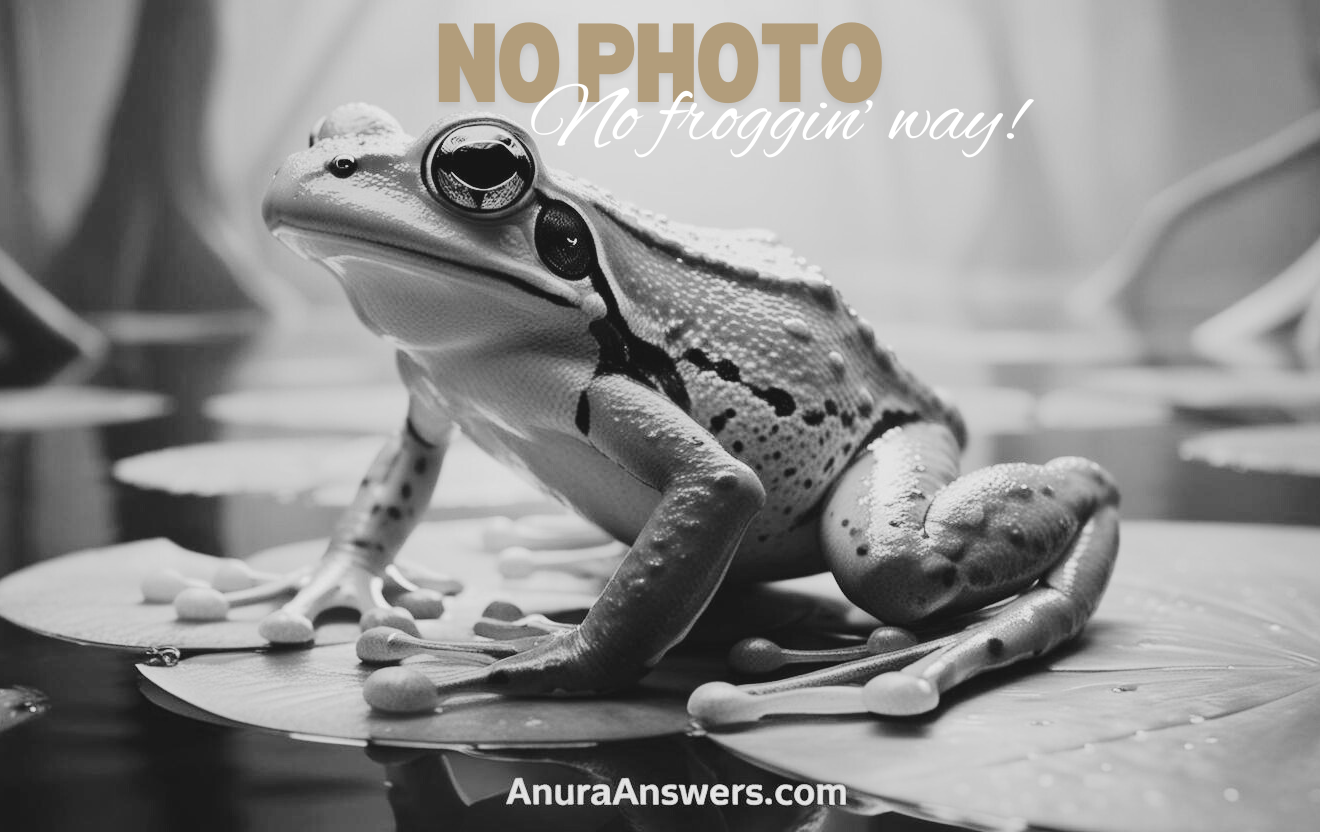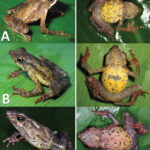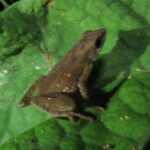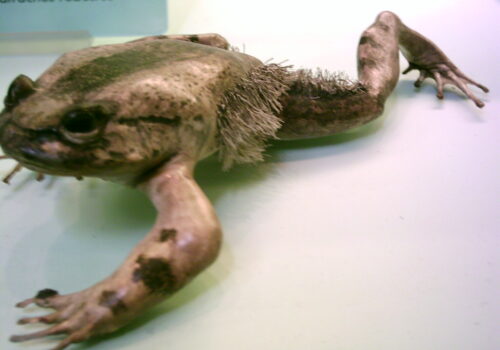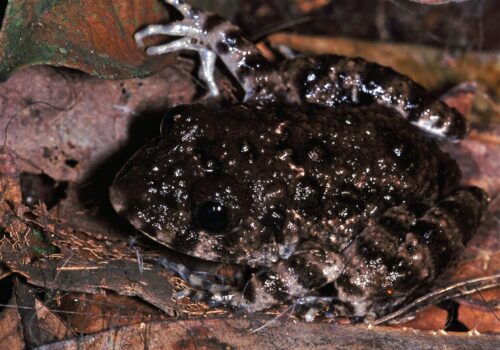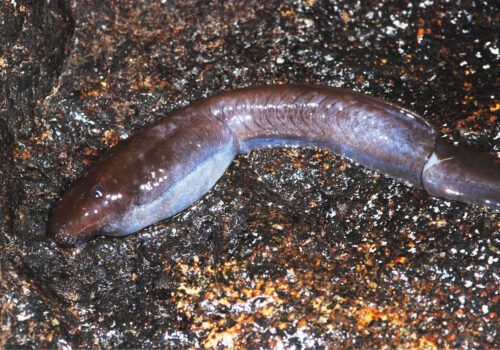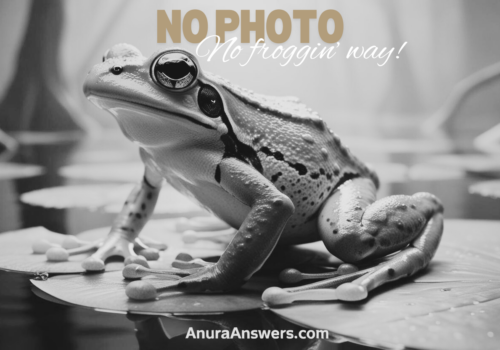- Introduction: A Hidden Gem of Africa’s Forests
- Taxonomy and Classification: Unraveling Family Ties
- Natural Habitat: Life Among the Leaves
- Physical Characteristics: Elegance in Arboreal Form
- Behavior and Life Cycle: Symphony in the Trees
- Ecological Role: Guardians of Forest Equilibrium
- Threats and Conservation Status: Vulnerability Amid Change
- Cultural and Scientific Significance: Little Frog, Big Impact
- Conclusion: Protecting the Subtle Symphony
Introduction: A Hidden Gem of Africa’s Forests#
Deep within the lush greenery of southern Africa’s woodlands and riverine forests, a delicate, cryptic creature moves quietly through the leaves and branches. Cloaked in intricate markings and subtle hues, the Bocage’s Tree Frog, scientifically termed Leptopelis bocagii, navigates the humid night air with an elegance known only to those fluent in arboreal acrobatics.
Named in honor of Portuguese biologist José Vicente Barbosa du Bocage, this fascinating amphibian possesses a charm quite distinct from many of its better-known relatives. From its compelling nocturnal chorus to its role as an ecological sentinel, Bocage’s Tree Frog is an understated but extraordinary protagonist within its specialized forest domain. But what secrets does this mysterious amphibian hold, and what can it teach us about the health of its hidden African realm?
Taxonomy and Classification: Unraveling Family Ties#
Scientifically classified under the genus Leptopelis, Leptopelis bocagii belongs to the family Arthroleptidae. While commonly termed the Bocage’s Tree Frog, some experts also refer to it simply as “Bocage’s forest treefrog,” highlighting its arboreal affinities.
This genus includes several similar species across sub-Saharan Africa, and the challenges of identification underscore the importance of detailed study and scientific observation. Close relatives, such as Leptopelis natalensis and Leptopelis vermiculatus, share many ecological and physiological traits but differ subtly in appearance, calls, and restricted distributions, illuminating how diverse even closely related African amphibians may become through nuanced evolutionary pressures.
Natural Habitat: Life Among the Leaves#
The Bocage’s Tree Frog is primarily adapted to southern Africa’s rich and diverse biomes, inhabiting countries including Angola, Zambia, Zimbabwe, Malawi, Tanzania, and Mozambique. Here, it prefers moist evergreen woodland, tropical and subtropical forest edges, dense riverine vegetation, and occasionally humid savanna habitats adjacent to water sources.
Stepping lightly through moss-covered logs, shrubs, and understory foliage, these frogs offer a masterclass in camouflage, blending seamlessly into the damp greens and browns of their verdant backdrop. Active predominantly at night, they exploit vertical niches within their ecosystem—branches, leaves, vines—ensuring survival through stealth and subtlety.
The ecological integrity of their habitat is crucial: moisture, warmth, ample foliage, and diverse insects provide ideal conditions for the frog’s delicate skin and voracious appetite. As habitats degrade—due to agriculture expansion, deforestation, or pollution—vulnerabilities for species like Leptopelis bocagii multiply, reinforcing its sensitivity as an indicator species in threatened natural areas.
Physical Characteristics: Elegance in Arboreal Form#
To observe a Bocage’s Tree Frog up close is a privilege. A modest amphibian in size—measuring between 3 and 5 centimeters in length—its petite build belies remarkable sophistication in both form and function.
The frog’s coloration ranges from pale grey-green and brownish-green to deeper shades of olive, typically adorned with subtle darker irregular markings. Its ventral side displays a creamy or pale-white coloration, often peppered with small granulations. Exceptionally designed limbs confer impeccable agility, and adhesive pads topping their digits enable unparalleled climbing and gripping power, perfect for life in the moist foliage canopy.
The large, striking eyes—with horizontally elliptical pupils—allow keen night vision for nocturnal hunting. The skin texture is subtly granular but not overly rough, serving a dual purpose of minimal water loss and optimal camouflage. Each physical trait of Leptopelis bocagii emerges through evolutionary refinement, representing the intersection of form, function, and survival in their challenging arboreal world.
Behavior and Life Cycle: Symphony in the Trees#
A Nocturnal Chorus#
The arrival of darkness cues moments of unmistakable activity in Bocage’s Tree Frogs. The gentle curtain of dusk announces a chorus of soft yet distinctly pulsing calls—a rhythmic series of short whistles and clicking sounds. Males usually initiate these conversations from elevated perches—leaves or twigs just above ground or water—calling for potential mates and advertising their presence to rivals. Their myriad unique calls create a forest symphony that carries gently through the humid air.
The Intricacies of Reproduction#
Bocage’s Tree Frog’s breeding season often coincides with heavy rainfall, a critical environmental trigger enhancing breeding pond availability and egg development. Males actively court females with persistent calls and decreased territorial aggression until pairs form. The female lays her clutch—small clumps of gel-covered eggs—directly onto submerged plant stems or suspended vegetation hanging just above water surfaces, where the eggs will later drop into the water to hatch.
Upon hatching, free-swimming tadpoles emerge, distinctly different in physiology from adults. Sporting powerful tails and equipped with mouths adapted to filter microscopic algae, tadpoles remain vulnerable and aquatic for several weeks. As they experience remarkable metamorphosis, limbs sprout, tail diminishes, and terrestrial lungs form, gradually preparing the juvenile frogs for their arboreal future.
Ecological Role: Guardians of Forest Equilibrium#
The role of Bocage’s Tree Frog extends far beyond its small physical form. Amphibians globally are eminent ecological indicators—species whose presence, abundance, and behavioral adaptations offer vital insights into environmental health. Leptopelis bocagii consumes diverse insect prey, facilitating the control of insect populations and maintaining balance within local ecosystems.
Simultaneously, this little amphibian serves as what ecologists call a “middle-level” species in its ecological hierarchy. It is predator and prey: insects fear its keen hunting abilities, while larger animals like birds, snakes, and small mammals depend upon it for food. Its delicate existence strengthens food-web stability, depicting precisely why amphibian health directly correlates with the integrity of the entire ecosystem.
Threats and Conservation Status: Vulnerability Amid Change#
Leptopelis bocagii currently retains a status of “Least Concern” on the International Union for Conservation of Nature (IUCN)’s Red List. However, like countless amphibians worldwide, it faces growing threats.
Habitat destruction through agriculture expansion, logging, and human settlement decrease suitable habitats critical to the frog’s survival. Additionally, pollutants, climate change-induced temperature shifts, altered rainfall patterns, and risks from infectious chytrid fungal disease (Batrachochytrium dendrobatidis) increasingly pressure populations.
Presently, conservation efforts primarily focus on habitat preservation and environmental education, emphasizing sustainable land management, compliance with environmental protection regulations, and vigilant monitoring of amphibian populations.
Cultural and Scientific Significance: Little Frog, Big Impact#
Culturally, the Bocage’s Tree Frog stands quietly but profoundly significant. Local indigenous stories and oral traditions often associate frogs with signs of abundant rainfall and environmental health, reminding dwellers of ecological interconnectedness.
Scientifically, its presence helps researchers analyze shifts caused by environmental factors. Hospitals and labs have recently capitalized upon novel compounds from amphibian skin secretions, investigating natural antibiotics and antifungal agents—thus highlighting frogs as potential reservoirs of untapped pharmaceutical advances.
Conclusion: Protecting the Subtle Symphony#
The Bocage’s Tree Frog offers vital lessons for nature enthusiasts and conservationists alike: nature’s quiet wonders merit profound respect and careful observation. Leptopelis bocagii embodies the delicate strength of ecosystems and the resilience of life—even in the face of growing environmental threats.
To protect this humble resident is to defend a broader ecological symphony, ensuring that future generations can equally experience the lush chorus of Africa’s nighttime forests. Take action by supporting organizations dedicated to amphibian conservation, spreading awareness, and safeguarding critical habitats that echo with the soft, melodic calls of Bocage’s invaluable tree sentinel.
